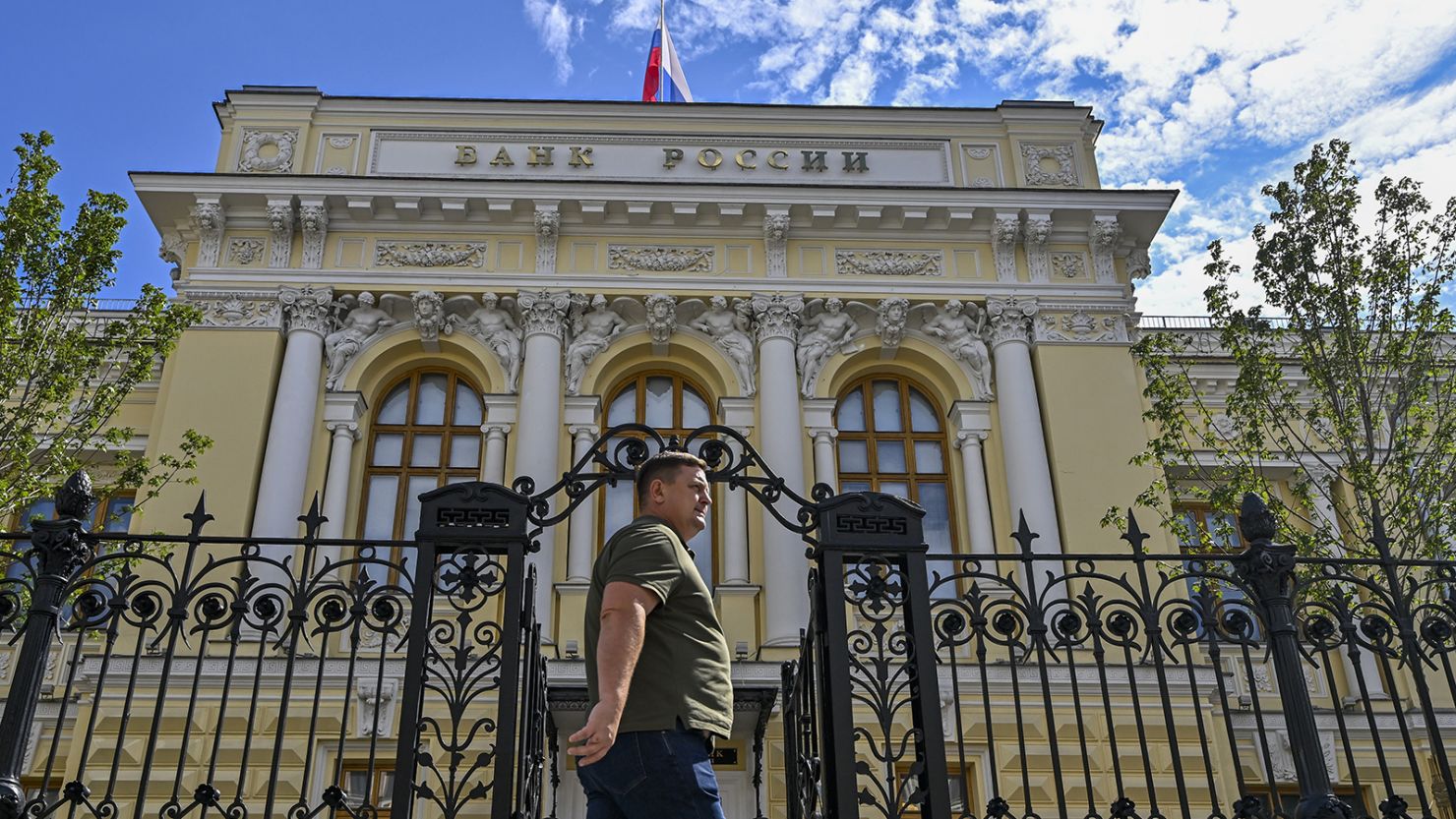The ruble hit a 17-month low against the dollar Monday, highlighting the growing squeeze on Russia’s economy from Western sanctions and a slump in export revenues.
The Russian currency has lost nearly 40% of its value this year, weakening past 100 rubles to the dollar, as Moscow’s war in Ukraine takes a heavy toll.
The fall in the ruble’s value is one of several negative indicators for the Russian economy, even as President Vladimir Putin insists that Western sanctions are having a limited effect.
The currency collapsed in the immediate aftermath of Russia’s full-scale invasion of Ukraine in February 2022, dropping as low as 136 to the dollar in March 2022. It then soared to around 50 rubles to the dollar in June last year, as oil and natural gas prices surged.
But European economies have since weaned themselves off Russian oil and gas, importing more from the United States, Canada and Norway instead.
That has strained the Russian government’s finances, which are also under pressure from a surge in spending to pay for the ongoing war.
The Kremlin has doubled its 2023 defense spending target to more than $100 billion — a third of all public expenditure — a government document reviewed by Reuters showed.
Western sanctions have also depressed foreign investment in the country and knocked exports.
The drop in exports, combined with a jump in imports driven by strong domestic demand, has cheapened the ruble further, according to Russia’s central bank governor Elvira Nabiullina.
The central bank said Monday that elevated government “demand” and high rates of lending by Russian banks had boosted overall activity in the economy, placing upward pressure on inflation and contributing to the ruble’s weakness.
It also said it could raise interest rates soon to bring price rises under control. “The Bank of Russia admits the possibility of raising the key interest rate in coming meetings,” it said in a statement shared with CNN.
Last month, the central bank pointed to rising inflation and the weaker currency as it hiked its benchmark interest rate for the first time in more than a year, taking it to 8.5%.
After enacting an emergency hike to 20% shortly after the start of the war, policymakers had gradually cut rates to 7.5%, putting further downward pressure on the ruble.
Maxim Oreshkin, an economic adviser to Putin, blamed the central bank for the currency’s depreciation and acknowledged that a weak ruble was bad for Russia’s economy.
“The main reason for the ruble’s weakening and inflation accelerating is loose monetary policy,” he wrote in an article for Russian state media agency TASS published Monday.
“The central bank has all the necessary tools to normalize the situation in the near future,” Oreshkin added. “A weak ruble complicates the restructuring of the economy and has a negative impact on the population’s real incomes.”
— Olesya Dmitracova, Clare Sebastian and Tim Lister contributed reporting.






